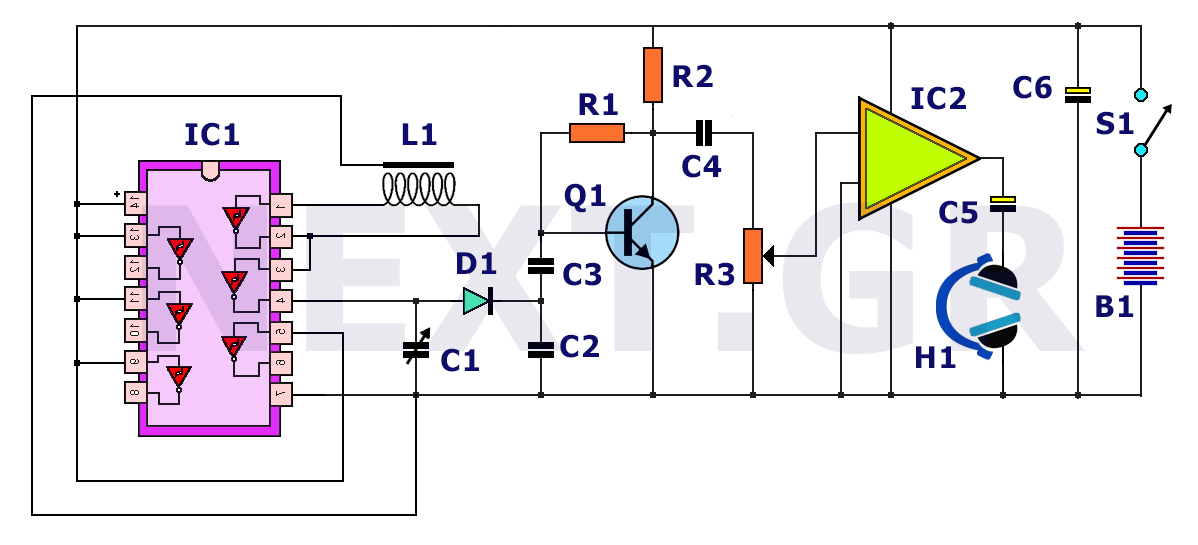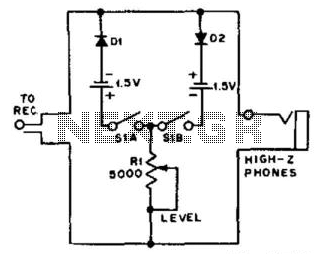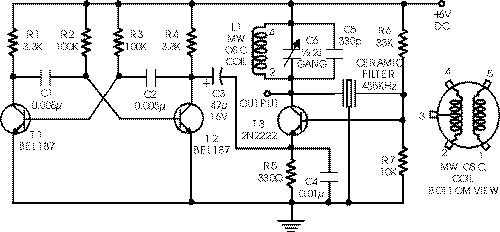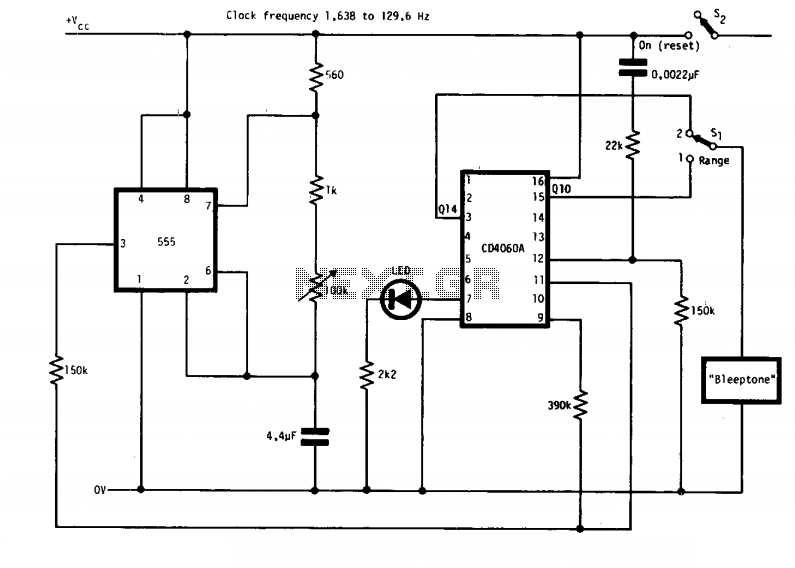
Simple Timer by CA3140 + NE555
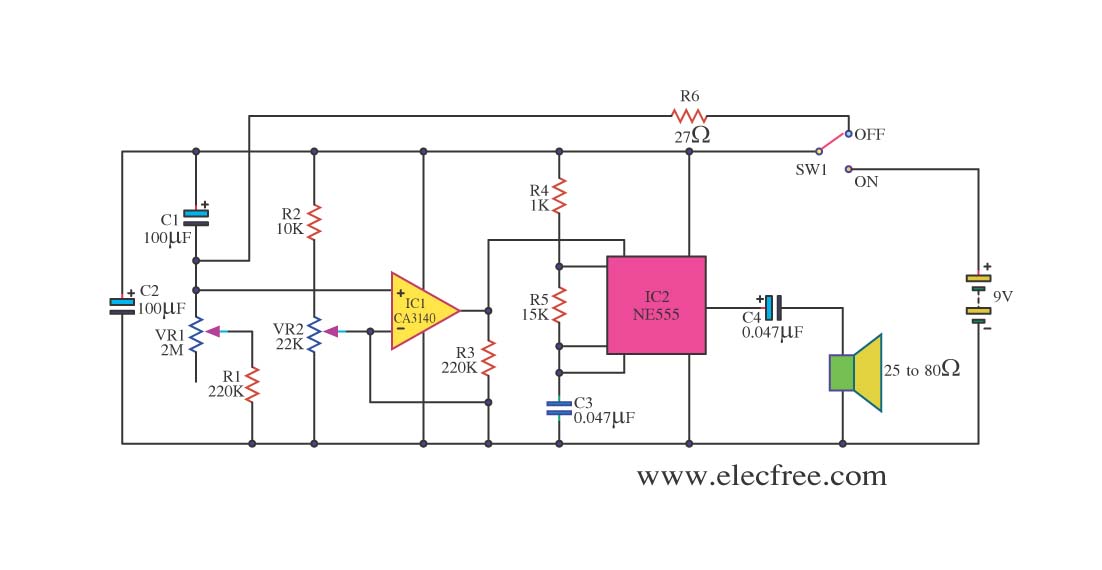
This circuit sets the time using a simple model that can accurately maintain the time over extended periods. It employs the CA3140 integrated circuit for its functionality.
The circuit utilizes the CA3140 operational amplifier, which is known for its high precision and stability, making it suitable for timekeeping applications. The design typically includes a timing capacitor and resistor network that determines the time interval. The CA3140 is configured in an astable multivibrator or as part of a more complex timing circuit, depending on the desired accuracy and time range.
The timing capacitor, when charged and discharged through the resistor network, creates a square wave output that can be used to drive a digital display or trigger other timing-related functions. The choice of capacitor and resistor values is crucial, as they directly influence the frequency of oscillation and, consequently, the timing accuracy.
Additional components may include diodes for reverse polarity protection and transistors for driving higher loads. The circuit can be powered by a stable DC voltage source, ensuring that the timing remains consistent over time. By using high-quality components and careful layout techniques, the circuit can achieve long-term stability and reliability, making it suitable for various applications, including clocks, timers, and event counters.This be the circuit sets the time to model is simple,at can fix the time had long ago and have tall good accuracy. By use pillar equipment be IC CA3140 for.. 🔗 External reference
The circuit utilizes the CA3140 operational amplifier, which is known for its high precision and stability, making it suitable for timekeeping applications. The design typically includes a timing capacitor and resistor network that determines the time interval. The CA3140 is configured in an astable multivibrator or as part of a more complex timing circuit, depending on the desired accuracy and time range.
The timing capacitor, when charged and discharged through the resistor network, creates a square wave output that can be used to drive a digital display or trigger other timing-related functions. The choice of capacitor and resistor values is crucial, as they directly influence the frequency of oscillation and, consequently, the timing accuracy.
Additional components may include diodes for reverse polarity protection and transistors for driving higher loads. The circuit can be powered by a stable DC voltage source, ensuring that the timing remains consistent over time. By using high-quality components and careful layout techniques, the circuit can achieve long-term stability and reliability, making it suitable for various applications, including clocks, timers, and event counters.This be the circuit sets the time to model is simple,at can fix the time had long ago and have tall good accuracy. By use pillar equipment be IC CA3140 for.. 🔗 External reference


